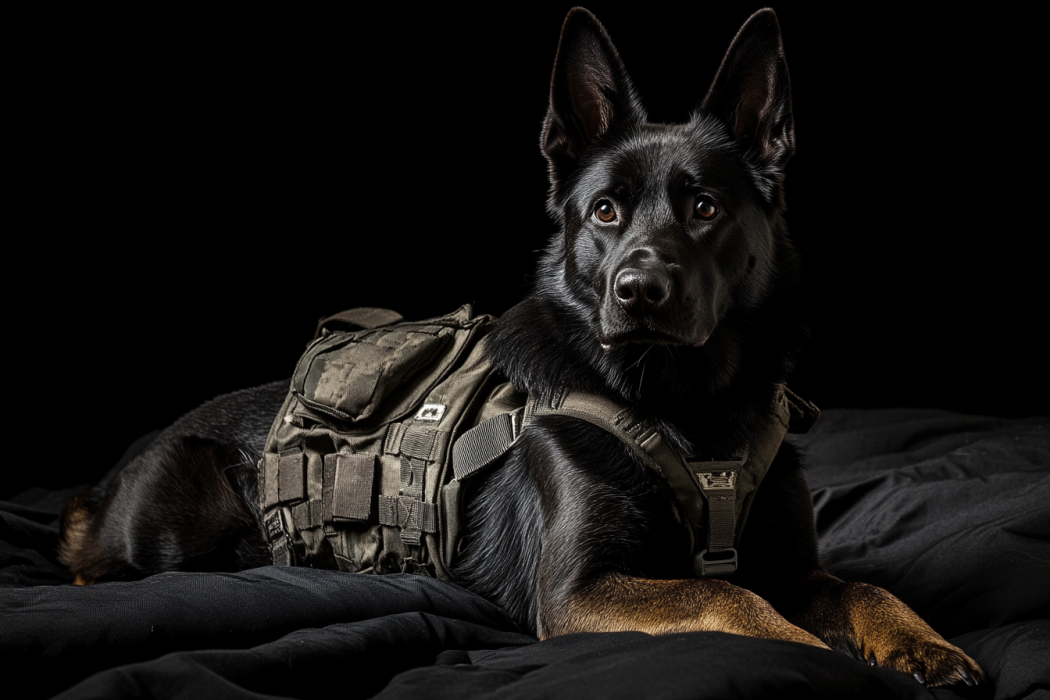Understanding Dominance and Rule-Based Training in Working Line German Shepherds
Dominance in dogs is often misunderstood. Many owners mistakenly believe their dog is dominant when it simply lacks clear rules. True dominance in dogs is rare. Most cases involve behavioral issues caused by inconsistent handling or unclear boundaries. However, an unruly dog can still cause serious harm, just as a dominant one can. For working line German Shepherds, leadership and structure are essential.
This article explores dominance misconceptions, the importance of clear rules, and strategies to address behavior issues. It focuses on actionable solutions for managing working line German Shepherds. Here at Czech Working Line, we recognize that higher drive dogs like those we produce come with needs beyond those of a fuzzy lap dog. Dogs like ours get stuff done. But their higher drive makes it all the more important for you to get training started off on the right food. Do this, and you will set yourself up for a fruitful relationship between your dog and yourself. So, whether you arrived at our site looking for information on a dog you already own, or are in the early stages of searching for a working line German Shepherd puppy for sale, we are glad you are here. Check back often for more articles on these kinds of topics.
Recognizing Pack Structure in Working Line German Shepherd Dogs
Dogs are social animals with natural pack instincts. In every group, a hierarchy exists. Leaders assert authority, and lower-ranking members comply. This structure is instinctual and deeply embedded in canine behavior (Bradshaw, 2011).
When a German Shepherd enters a home, it views the family as its pack. Without clear leadership, it may attempt to fill the leadership role. This often leads to unruly behavior, confusion, and sometimes aggression. Dogs do not seek dominance out of malice but because of an absence of structure. Research suggests dogs experience stress when placed in leadership roles they are not equipped to handle (Serpell, 1995).
The Role of Rules and Consistency in Training Working Line German Shepherd Dogs
Establishing rules is key to managing a working line German Shepherd. Rules provide structure and clarity. Dogs thrive when they know what is expected. For example, clear rules might include:
- No growling near food bowls.
- No jumping on people.
- No begging for food at dinner table
- Staying off furniture unless invited.
- Calm behavior around guests.
Consistency is equally important. A rule enforced one day but ignored the next confuses the dog. Inconsistent handling leads to defiance and frustration in both the dog and the owner (Hiby et al., 2004). Owners must enforce consequences reliably. These do not always need to be physical corrections. For dogs with soft temperaments, a stern verbal warning suffices. For others, leash corrections may be necessary.
Mistakes Leading to Behavioral Issues
Many problems begin with misunderstanding canine behavior. New owners often mistake prey drive for dominance. Puppies bite hands, chase feet, and growl during play. This is not aggression. It is typical puppy behavior rooted in play and prey instincts (Overall, 2013).
Unfortunately, many owners fail to redirect these behaviors appropriately. Instead of introducing toys or food as outlets, they allow bad habits to persist. By adolescence, this mismanagement leads to frustration and escalated behavior.
Obedience training also plays a critical role. However, basic commands like sit, stay, and come are not enough. Dogs must learn polite behavior in real-life scenarios. For example, leaving food on the counter, staying calm when visitors arrive, or ignoring small children. Traditional obedience classes often overlook these essential behaviors.
Addressing Food and Resource Guarding
Food guarding is a common issue misunderstood by owners. A dog growling over its food bowl signals a problem. It either lacks trust or does not respect the owner’s leadership. Rather than punishing growling, owners should address the root cause.
Feeding dogs in crates is an effective solution. It removes competition and reduces stress. Research suggests crate-feeding significantly decreases food guarding behaviors (Casey et al., 2014). Owners should also establish clear feeding rituals. For instance, requiring the dog to sit before placing the food bowl reinforces control and calmness.
Avoid unnecessary food removal exercises. Constantly taking food away creates anxiety rather than trust. A better approach is trading food for high-value treats. This teaches the dog to associate human interaction near food with positive experiences.
The Importance of Crate Training Working Line German Shepherd Dogs
Crate training is indispensable for managing dominance in German Shepherds. The crate provides a controlled environment. It prevents undesirable behaviors, such as guarding furniture or challenging family members. Proper crate training reduces anxiety and teaches dogs to relax in a secure space (Lindsay, 2001).
Dogs should sleep in crates, not on beds. Allowing a dominant dog to share sleeping quarters reinforces the idea of equal rank. Leaders always occupy the best sleeping space in a pack. Over time, denying access to the bedroom establishes leadership without confrontation.
Crate training also aids in obedience. Dogs learn boundaries through controlled confinement. This is particularly effective when managing resource guarding or reactivity toward guests.
The Myth of Alpha Rolls
Alpha rolls—forcing a dog onto its back—are outdated and dangerous. While some trainers popularized this method, it is widely discredited. Research shows that alpha rolls increase stress and aggression rather than reducing dominance (Ziv, 2017). Dominant dogs often escalate aggression during physical confrontations.
Instead, focus on controlling the dog’s environment. Remove triggers that cause dominance displays. For example:
- Feed the dog in its crate.
- Remove toys that trigger possessiveness.
- Prevent access to beds or furniture.
Leadership is established through calm, consistent management. Avoid physical confrontations that damage trust and escalate behavior.
Social Rank and Human Leadership
German Shepherds instinctively understand social rank. Leaders eat first, occupy prime sleeping spaces, and control resources. Owners must communicate leadership through actions, not force. Simple habits reinforce rank without confrontation:
- Requiring the dog to sit before receiving food.
- Leading the dog through doors instead of allowing it to charge ahead.
- Controlling playtime and removing toys when play ends.
These small actions build respect. Dogs recognize the owner as the leader without fear or stress. Research confirms that positive reinforcement combined with consistent boundaries creates stable, well-behaved dogs (Blackwell et al., 2008).
The Solution: Control the Environment
When dealing with dominance issues, control is key. Owners must manage the dog’s environment to prevent negative behaviors. Dominant dogs should not interact with strange dogs or attend dog parks. Such situations often trigger rank disputes and aggression.
Crates, gates, and leashes provide tools to manage behavior. Prevent the dog from practicing dominance. Place it in a crate during meals, limit access to furniture, and remove triggers like toys when necessary.
Engagement training builds trust. Use food rewards and structured play to establish a bond. Over time, dogs learn to respect their handler as a calm, fair leader. For dominant adult dogs, this approach is safer and more effective than physical corrections.
Conclusion
Dominance in working line German Shepherds stems from a lack of structure, not malice. Misunderstandings about canine behavior often escalate problems. By establishing clear rules and enforcing them consistently, owners can resolve most dominance issues. Tools like crate training, feeding rituals, and structured play build leadership without force. Controlling the environment prevents conflicts and teaches respect.
Owners must act as calm, consistent leaders. Working line German Shepherds thrive under strong leadership. With proper management, these intelligent, driven dogs can become reliable, well-mannered companions.
Bibliography
Blackwell, E. J., Twells, C., Seawright, A., & Casey, R. A. “The Relationship Between Training Methods and the Occurrence of Behavior Problems in a Population of Domestic Dogs.” Journal of Veterinary Behavior, vol. 3, no. 5, 2008, pp. 207–217.
Bradshaw, J. W. S. In Defence of Dogs: Why Dogs Need Our Understanding. London: Penguin Books, 2011.
Casey, R. A., Loftus, B., Bolster, C., Richards, G. J., & Blackwell, E. J. “Human Directed Aggression in Domestic Dogs (Canis familiaris): Occurrence in Different Contexts and Risk Factors.” Applied Animal Behaviour Science, vol. 152, 2014, pp. 52–63.
Hiby, E. F., Rooney, N. J., & Bradshaw, J. W. “Dog Training Methods: Their Use, Effectiveness and Interaction with Behaviour and Welfare.” Animal Welfare, vol. 13, no. 1, 2004, pp. 63–69.
Lindsay, S. R. Handbook of Applied Dog Behavior and Training, Volume One: Adaptation and Learning. Ames: Iowa State University Press, 2001.
Overall, K. L. Manual of Clinical Behavioral Medicine for Dogs and Cats. St. Louis: Elsevier Health Sciences, 2013.
Serpell, J. A. The Domestic Dog: Its Evolution, Behaviour, and Interactions with People. Cambridge: Cambridge University Press, 1995.
Ziv, G. “The Effects of Using Aversive Training Methods in Dogs: A Review.” Journal of Veterinary Behavior, vol. 19, 2017, pp. 50–60.




